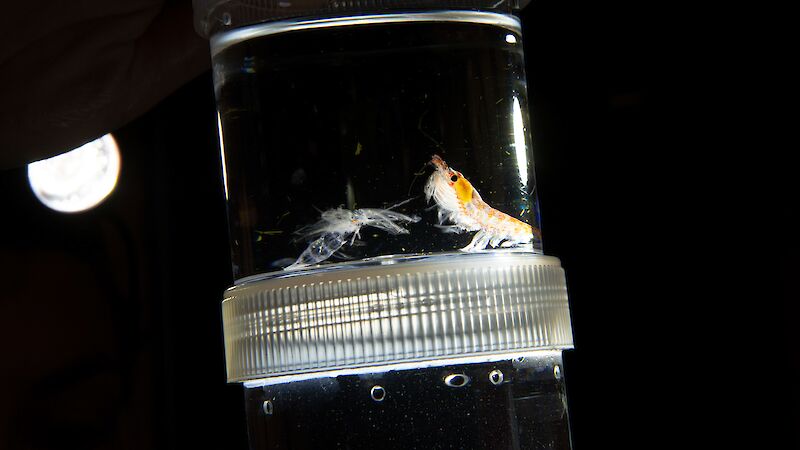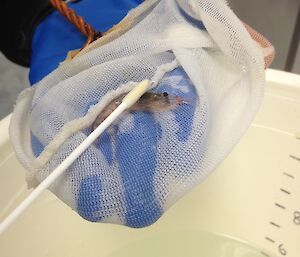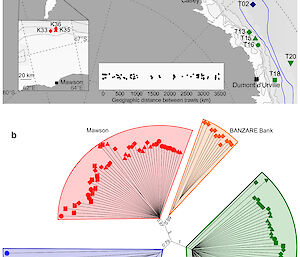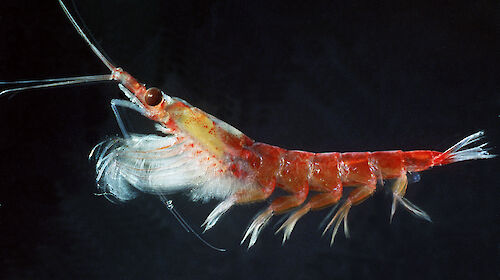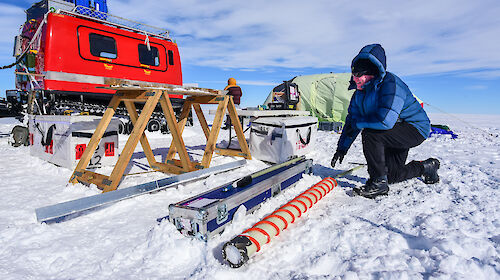American scientists showed that during a game of roller derby, where roller-skating competitors frequently bump into each other, communities of bacteria on team-mates’ skin converged with the opposing team after a bout.
In the krill equivalent of roller derby, Australian Antarctic Program scientists have found that krill swarms in different geographic locations have distinct communities of bacteria (microbiomes) living on their exoskeleton, and that these bacteria are shared between individuals within the swarm by close contact.
Australian Antarctic Division molecular ecologist Dr Laurence Clarke said that when a krill moults, bacteria on the krill swimming around them are the most likely source of colonisation of their new exoskeleton.
“This maintains the fidelity of the microbiome in that swarm,” Dr Clarke said.
“So if that microbiome has some genetic drift, it drifts with the swarm, rather than the individual.”
Importantly, Dr Clarke said the research also showed that differences in krill microbiomes, in different swarms, was driven by geographic distance, rather than the environment.
This discovery provides a way to define distinct groups of krill and potentially manage them accordingly.
“It looks like the krill microbiome is a potential proxy for krill population connectivity, which could provide a new means of managing the krill fishery,” Dr Clarke said.
Krill populations themselves are genetically indistinguishable around the Antarctic continent and the krill genome is so large (more than 14 times the size of the human genome) that it is currently near-impossible to sequence. From a genetics and fishery perspective, this means that krill fished from the Antarctic Peninsula are the same as those caught off East Antarctica. But are they?
“If we can answer this question, we can better manage krill,” Dr Clarke said.
“We know that genetic differentiation occurs slowly between isolated populations that contain a large number of individuals. So because there are so many krill, there may be distinct populations in different regions of the Southern Ocean that are being missed.
“If krill are all part of one homogenous, connected group, fished populations will be replenished by natural dispersal, and localised fishing is appropriate. But if they exist as distinct populations, then depleting one fishing area could mean the loss of an ecologically important population. In which case we should spread the fishing effort out more.”
The research team looked at the microbiomes of krill caught in 13 trawls off East Antarctica, separated by between four and 3,481 kilometres.
They also looked at environmental factors that could influence changes in the microbiome – including salinity, temperature, primary production and ocean fronts.
They found four distinct microbiome communities that showed no relationship to the environmental variables. However krill caught within about 650 kilometres of each other shared similar microbiomes, which were distinct from the microbiomes of krill caught further away.
“All our modelling showed that it was geographic distance, rather than environmental variables, that was the most likely explanation for the differences between populations,” Dr Clarke said.
The team also found that when they split a single krill swarm between four tanks in the Australian Antarctic Division’s krill aquarium, and raised the animals for seven months under near-identical conditions, four significantly different microbiomes arose.
“This strongly suggests that distinct krill microbiomes can arise in identical environments due to physical isolation alone,” Dr Clarke said.
Much like how bacteria in the human gut influences different people’s digestion, different krill microbiomes could mean functionally different krill.
“Even if we don’t yet know exactly how the microbiome structure connects to the krill population structure, if we know there are distinct bacteria-krill associations in different areas then the krill are potentially functionally different.
“We may need to consider this in the future when trying to manage the krill fishery.”
The research is published in Molecular Ecology.
Check out our interactive feature on krill and a voyage to the Southern Ocean on RV Investigator (currently underway), which aims to measure the biomass of krill in a re-emerging fishery off East Antarctica.

